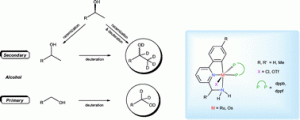In this Dalton Transactions Hot Article, Cameron Jones and colleagues from Monash University, Australia prepared a series of extremely bulky secondary amines.
Deprotonation of the amines with LiBun NaH or KH resulted in alkali metal amide complexes. Reaction of the amides with germanium, tin or lead chloride yielded the first two-coordinate monomeric amido germanium(II) and tin(II) chloride complexes and a chloride bridged amido-lead(II) dimer.
These compounds hold potential as precursors for kinetically stabilised low oxidation state and/or low coordination number main group complexes.
Read more for FREE:
Extremely bulky amido-group 14 element chloride complexes: Potential synthons for low oxidation state main group chemistry
Jiaye Li, Andreas Stasch, Christian Schenk and Cameron Jones
Dalton Trans., 2011, Advance Article
DOI: 10.1039/C1DT10678C, Paper


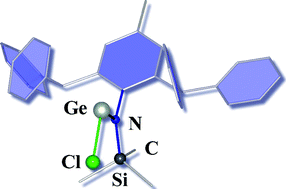









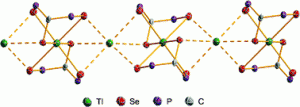
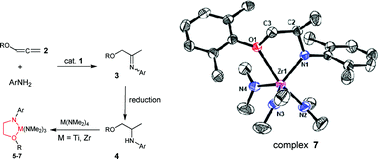 This Dalton Transactions Hot article investigates the intermolecular hydroamination of heteroatom-substituted allenes.
This Dalton Transactions Hot article investigates the intermolecular hydroamination of heteroatom-substituted allenes.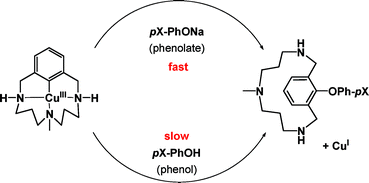 In this HOT article, Ribas and co-workers build on previous studies on the mechanism of Ullmann cross coupling reactions using a well-defined aryl-copper(III) complex. Fundamental mechanistic knowledge of these couplings is still scarce but is gaining renewed interest due to the cost and toxicity benefits in comparison to Pd-based methodologies for the synthesis of key intermediates in the pharmaceutical industry. The reactivity of well defined aryl–CuIII species in front of phenol-type nucleophiles was found to differ substantially from the reactivity with corresponding phenolates, and a significant enhancement was found to produce the same aryl–O coupling product. Mechanistic studies showed that easy deprotonation of coordinated secondary amines was responsible for the intense LMCT band at 545 nm; indeed, this pH-dependent reactivity of the pincer-like coordinated ligand somewhat enhanced its reactivity.
In this HOT article, Ribas and co-workers build on previous studies on the mechanism of Ullmann cross coupling reactions using a well-defined aryl-copper(III) complex. Fundamental mechanistic knowledge of these couplings is still scarce but is gaining renewed interest due to the cost and toxicity benefits in comparison to Pd-based methodologies for the synthesis of key intermediates in the pharmaceutical industry. The reactivity of well defined aryl–CuIII species in front of phenol-type nucleophiles was found to differ substantially from the reactivity with corresponding phenolates, and a significant enhancement was found to produce the same aryl–O coupling product. Mechanistic studies showed that easy deprotonation of coordinated secondary amines was responsible for the intense LMCT band at 545 nm; indeed, this pH-dependent reactivity of the pincer-like coordinated ligand somewhat enhanced its reactivity.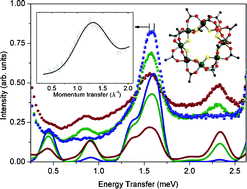 In this HOT article, a detailed study of the impact of a Jahn-Teller distorted Cu(II) ion in the anti-ferromagnetically coupled ring, Cr7Cu, is reported. The Jahn-Teller distortions are identified using spectroscopic techniques and a theoretical characterization is also presented. The problem is important for molecular magnetism as the origin of Jahn-Teller related magnetic anisotropy and consequently the barrier for the spin reversal is single molecular magnets.
In this HOT article, a detailed study of the impact of a Jahn-Teller distorted Cu(II) ion in the anti-ferromagnetically coupled ring, Cr7Cu, is reported. The Jahn-Teller distortions are identified using spectroscopic techniques and a theoretical characterization is also presented. The problem is important for molecular magnetism as the origin of Jahn-Teller related magnetic anisotropy and consequently the barrier for the spin reversal is single molecular magnets.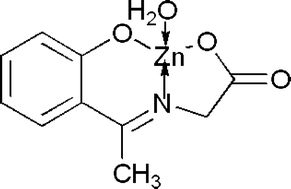 This Dalton Transactions Hot article looks at the use of zinc complexes in cancer treatment. This exciting compound, made by Soumitra Choudhuri and colleagues, was found to act against drug resistant cancers.
This Dalton Transactions Hot article looks at the use of zinc complexes in cancer treatment. This exciting compound, made by Soumitra Choudhuri and colleagues, was found to act against drug resistant cancers.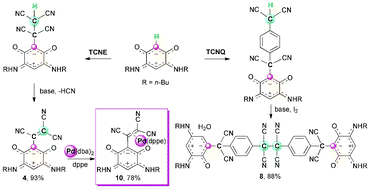

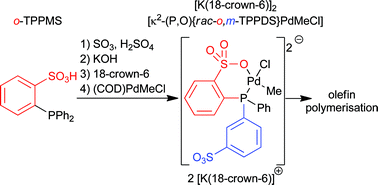 In this HOT article, a very careful synthetic and catalytic study of the use of di- and trisulfonated phosphines with o, m and o, m, m substitution patterns is described. Pd complexes of these were tested for copolymerizations with polar monomers. This led to a novel anionic phosphine sulphonate Pd(II)-based pre-catalyst salt for polymerisation reactions. Although, polymerisation in the presence of methyl acrylate, acrylonitrile and vinyl acetate led to reduced incorporation values compared to the available literature reports in combination with problems that are attributed to aggregation of the catalyst in most cases, the facile synthesis of chelating highly polar ligands which show high water solubility could be of significant interest for homogeneous catalysis by application in other systems.
In this HOT article, a very careful synthetic and catalytic study of the use of di- and trisulfonated phosphines with o, m and o, m, m substitution patterns is described. Pd complexes of these were tested for copolymerizations with polar monomers. This led to a novel anionic phosphine sulphonate Pd(II)-based pre-catalyst salt for polymerisation reactions. Although, polymerisation in the presence of methyl acrylate, acrylonitrile and vinyl acetate led to reduced incorporation values compared to the available literature reports in combination with problems that are attributed to aggregation of the catalyst in most cases, the facile synthesis of chelating highly polar ligands which show high water solubility could be of significant interest for homogeneous catalysis by application in other systems.